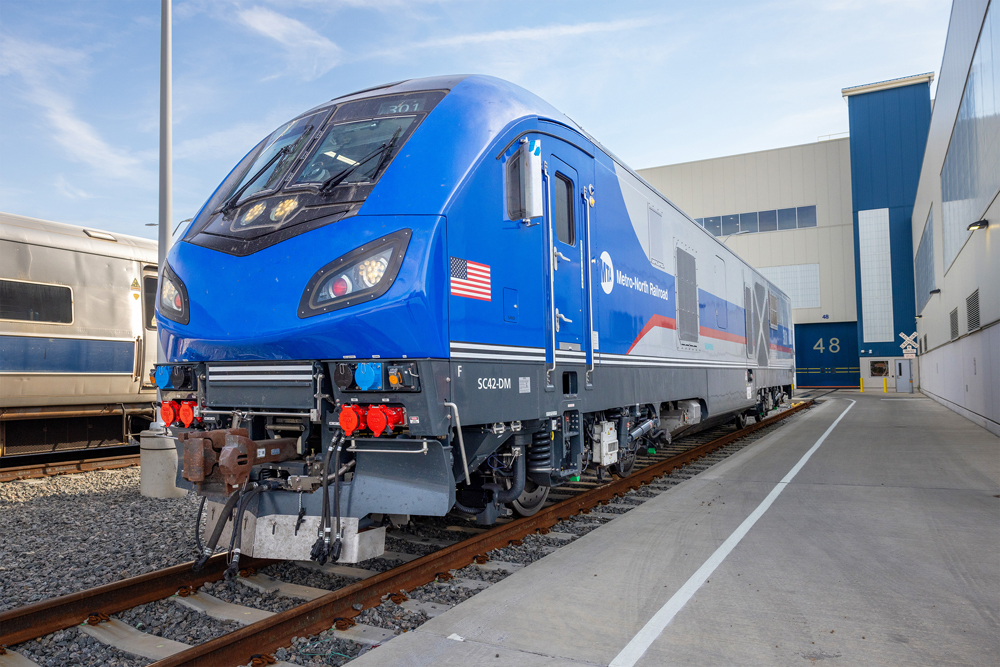JERSEY CITY, N.J. — A state appeals court has ruled that seven insurance companies have to pay to repair NJ Transit equipment damaged by flooding from Hurricane Sandy in 2012, a ruling that could be worth $400 million to the transit agency.
NJ.com reports that the decision upheld a 2017 court ruling that the transit agency was entitled to coverage up to the full $400 million in policy limits for 343 locomotives and railcars damaged by flooding at the Meadowlands Maintenance Complex in Kearny, N.J. The New Jersey Law Journal reports that he insurance companies contended NJ Transit had reached a $100 million limit for flood damage, while the transit agency contended it was entitled to the larger amount because the damage was caused by “a named windstorm.”
Judges wrote that “The evidence pertaining to this claim was ‘so one-sided’ that NJT was entitled to prevail as a matter of law.”
The damage from the 2012 storm has led NJ Transit to purchase land for a new maintenance facility, with emergency equipment storage space, in New Brunswick, N.J. [see “NJ Transit board approves new maintenance, storage facility,” Trains News Wire, March 14, 2019], as well as a number of other projects to recover from that event and prepare for future storms [see “NJ Transit to receive more FTA funding for Hurricane Sandy recovery,” Trains News Wire, Aug. 24, 2015].















What I remember at the time was the NJ Transit didn’t move the equipment anywhere else because it was on a Sunday and a no-overtime decree was in effect so millions was lost in destroyed equipment. Why didn’t the insurance companies fight this one more–which almost looks like NJ Transit decided to stage a flood? I well remember that storm because Saturday I had been on the LA&L trip and Sunday worshipped the Portageville Bridge. I then fled across the Southern Tier and the path of the approaching storm (my car had weatherband radio) keeping track of Sandy’s proposed path before finally giving up at Oneonta. D&H/CP/NS etc. were clearly preparing for a storm and moving.trains out of the way. Monday morning I left Oeonta for Richmondville Hill–still no wind and rain–and ate lunch at the Duanesburg Diner (well recommended). After that three D&H freights showed up at Delanson within an hour; finally started for Boston gassing up at D’burg at 3:30pm–and while doing that the wind started picking up. I raced over I-90 to get out of NY state before the roads were closed! The MA Pike I shared the road with emergency vehicles in windy rain–very little traffic. By Worcester things finally calmed down and I got home about eight. During this time the radio told an interesting fact–New Jersey and New York City hadn’t been hit by a storm like this since 1821. What happened in 1821? The Great Hurricane of 1821, a bigger version of Sandy and back before the days of Climate Change. That storm fortunately hit near low tide when NYC was little more than a big village; today such a storm hitting near high tide would probably wipe New York City out! So NJ Transit has its work cut out for it with having its yards, terminals, etc. in a low-level swamp.
Nobody was prepared for the level of the tidal surge. Sandy was going North along the Atlantic Coast until it was offshore of Atlantic City when it suddenly (as forecast) turned Left and proceeded West into NJ. This put the winds blowing from the South and West right over NY City and North Jersey, piling salt water wherever it would go.
The NY subway was flooded at South Ferry which flowed uptown (note: NYCTA has a diesel-powered pump train which they used during the cleanup.) LIRR’s Manhattan yard flooded and drained into Penn Station, which did not flood because the water drained further into the North River Tubes under the Hudson River. The salt water did not do the 1910-era concrete and steel in the tubes any good.
NJT, even if they had called crews, really didn’t have a high and dry yard in the NY area other than Jersey Avenue just West of New Brunswick which would have already been mostly full with the cars regularly parked there. NJT’s yards were at Meadows and Hoboken, both of which flooded.
I suppose they could have just run the trains out the line onto high ground and parked them there. Wilkes-Barre Railways parked trolleys on the Market Street Bridge when the Susquehanna River was expected to flood.
Expect insurance rates to go up for all of us as the definitions get re-defined…
New Jersey Transit needs this. Since Hurricane Sandy, the system has been through a lot of suffering. Employees disappearing, service at an all-time low, all this because of the equipment damaged by Sandy. In my opinion, both governments need to get New Jersey Transit back on a better side. Otherwise, New Jersey Transit is in for a rough ride.
New Jersey Transit dodged a bullet on this one. Obviously the insurance companies didn’t have a “We’ll pay up unless you do something stupid” clause in the policies, which NJT certainly did did by ignoring the warnings of flooding due to Hurricane Sandy.
Metro-North, the Long Island Railroad, even the NYC subway system moved their locomotives and rolling stock well away from projected flood zones so they suffered no equipment losses. Why NJT didn’t still has people scratching their heads.
As an interesting point, Sandy was not a hurricane when it made landfall (so said the National Weather Service) because its winds were below the 74? MPH hurricane threshold. While this is not germane to this discussion, it meant that anyone with a homeowners insurance policy with a hurricane exclusion clause (common in shore areas) dodged a bullet. The insurance companies are still crying about this, but numerous courts have ruled that they must cover damages.
These rulings may have had some influence on the courts decisions.